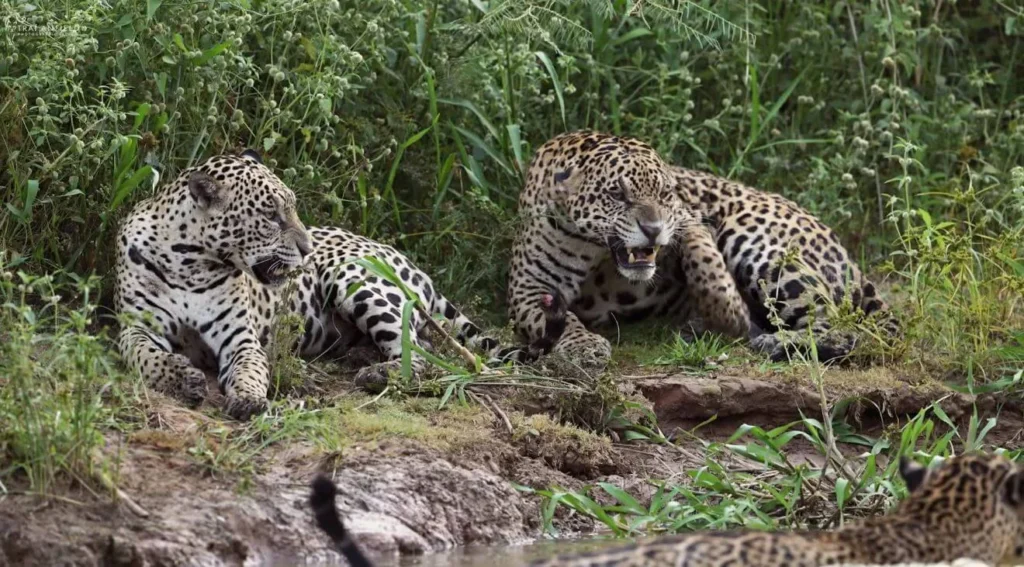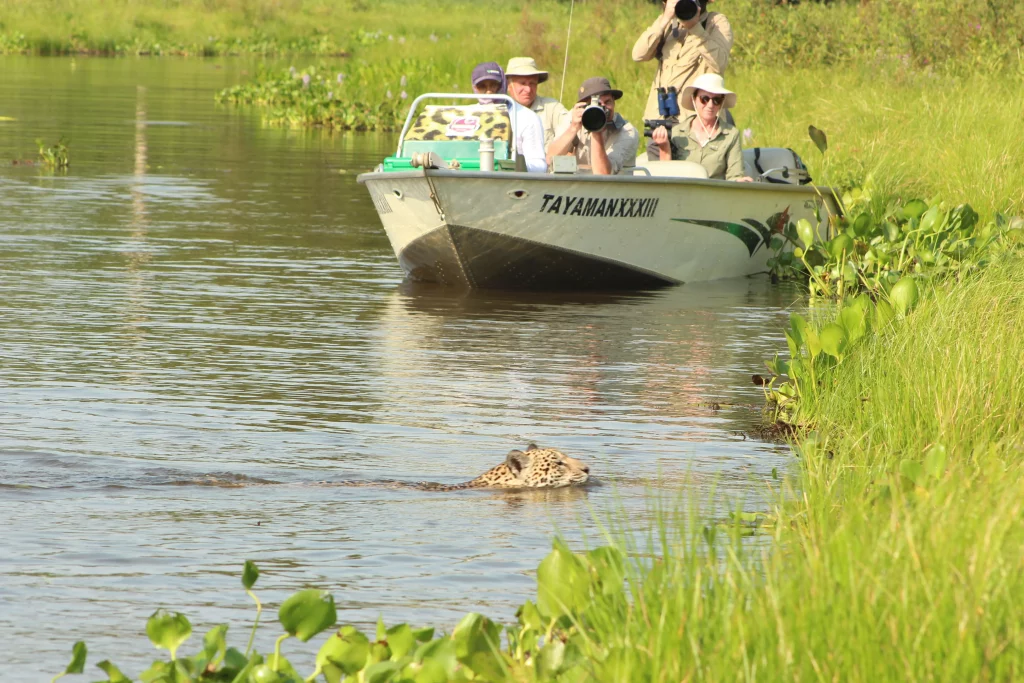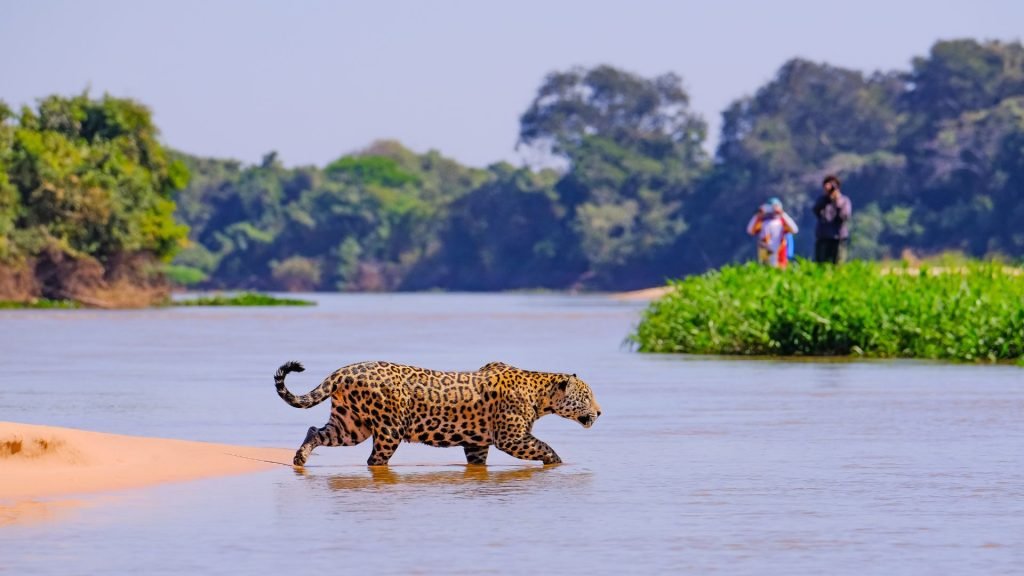The jaguar, the largest feline in the Americas, is a symbol of power and beauty in South American wildlife. With its distinctive black spots on a golden-yellow background, this majestic animal has captivated generations. In this article, we’ll answer the question: In which South American Countries Do Jaguars Live? We’ll explore its distribution across different ecosystems and discuss the importance of its conservation on the continent.
A Journey Through the Jaguar’s Habitats

The jaguar has adapted to a wide variety of habitats. It lives in dense tropical forests, savannas, and grasslands. Its broad distribution across South America makes it a true explorer. In this journey, we’ll see in which South American Countries Jaguars Live and how they contribute to biodiversity.
- Amazon Rainforest
The Amazon Rainforest is undoubtedly the largest and most diverse home for jaguars. Countries like Brazil, Peru, Colombia, Ecuador, Bolivia, and Venezuela hold vast stretches of forest where these felines find refuge and food. It is estimated that Brazil alone is home to approximately 50% of the world’s jaguar population. - Pantanal
The Pantanal, the largest wetland in the world, is another important habitat for jaguars. In Brazil, Paraguay, and Bolivia, these felines roam through the vast flooded grasslands and riverine forests. Here, they are frequently spotted in their natural environment. - Cerrado
The Cerrado, a tropical savanna in Brazil, also supports a significant jaguar population. This ecosystem is crucial for their survival, as it serves as a transition area between the forest and the open fields, providing essential refuge. - Other Habitats
Jaguars can also be found in smaller areas of Argentina and Uruguay. However, their presence in these countries has significantly declined due to habitat loss.
Threats and Conservation
Despite their adaptability, jaguars face numerous threats. Their survival is at risk due to habitat loss from deforestation, fragmentation of their territories, and illegal hunting. Conflicts with humans also pose a significant challenge. These threats impact the species in all the South American Countries where jaguars live.
Conserving jaguars is essential to maintaining the balance of South American ecosystems. Numerous organizations work to protect these felines and their habitats. They promote environmental education, establish protected areas, and develop strategies for sustainable management of natural resources.

What Can You Do?
- Spread Awareness: Share this article and other resources about jaguars to help more people understand the importance of their conservation.
- Consume Responsibly: Choose products from sustainable sources that don’t contribute to the destruction of natural habitats.
- Reduce Your Environmental Impact: Adopt habits that are more respectful of the environment. Reducing energy and water consumption, recycling, and using public transportation are all beneficial practices.
Jaguars are an essential part of South America’s biodiversity. Their presence in the ecosystems of the South American Countries where jaguars live is an indicator of these environments’ health. By learning more about these magnificent felines and taking action to protect them, we can ensure that future generations will continue to admire their beauty and strength.
Frequently Asked Questions

▸ Where can I book a tour to see jaguars in the Pantanal?
For a unique experience led by experts in finding jaguars, we recommend contacting Lorenzo Expeditions. This agency offers various tours in the Pantanal, designed to maximize your chances of spotting these felines in their natural habitat.
▸ Where can I see jaguars in Brazil?
While sightings are never guaranteed, some protected areas and nature reserves, like the Pantanal and the Amazon, increase the chances of spotting jaguars. You can consult local guides and wildlife tourism agencies for more information.
▸ What is the difference between a jaguar and a leopard?
Although both are large spotted felines, the jaguar is significantly larger and has a characteristic rosette-shaped spot on its neck. Additionally, the jaguar is native to the Americas, while the leopard primarily inhabits Africa and Asia.
▸ Are jaguars dangerous to humans?
Jaguars generally avoid humans. However, they may attack if they feel threatened or lack natural prey. It’s important to respect their space and follow safety guidelines when visiting areas where these animals live.
▸ What’s the best time to visit the Pantanal to see jaguars?
What’s the best time to visit the Pantanal to see jaguars?
The best time to observe jaguars in the Pantanal is during the dry season, from May to September. During this period, animals gather near rivers and lagoons.
▸ What other species can I see in the Pantanal besides jaguars?
The Pantanal hosts a wide variety of wildlife, including caimans, capybaras, anacondas, toucans, and many other species of birds and mammals.
▸ How does Amazon deforestation affect jaguars?
Deforestation reduces the available habitat for jaguars. It also fragments their populations and limits their movement. Additionally, it decreases the availability of prey for these felines.

Looking for a Unique Experience in Nature? Want to See One of the World’s Most Powerful Felines Up Close? Lorenzo Expeditions invites you to explore the Pantanal, home to one of the largest jaguar populations in the world.
Our guided tours will take you to the most remote corners of the Pantanal. There, you’ll have the chance to observe these majestic animals in their natural habitat. Our expert guides will teach you everything you need to know about jaguars. They’ll also help you identify other animals that inhabit this unique region. Book your tour today and experience an adventure you’ll never forget. We look forward to seeing you in the Pantanal!



